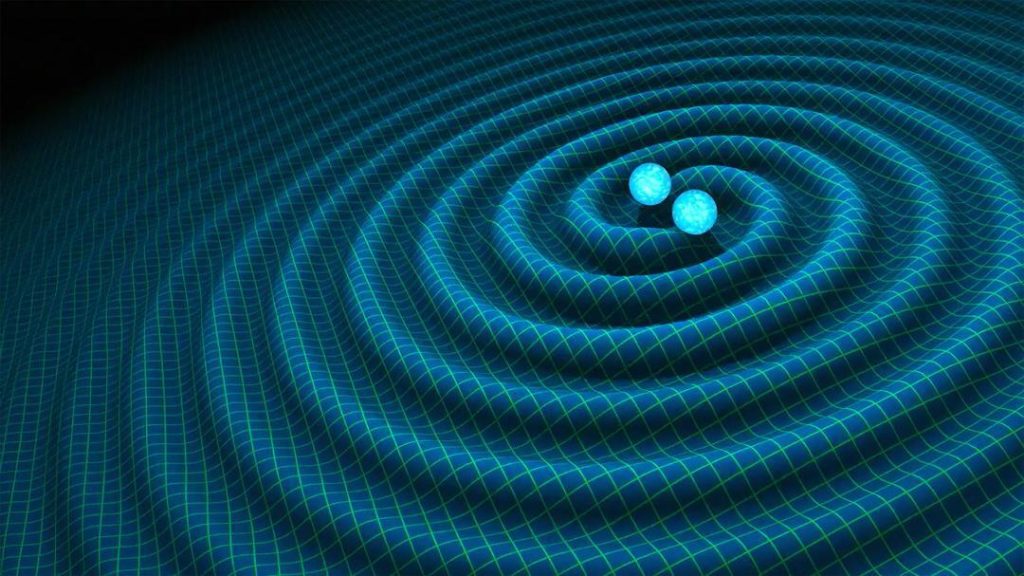
Study Finds How New Technology Enhances Gravitational-Wave Detection
The detection of gravitational waves has revolutionized our understanding of the universe, allowing us to study cosmic phenomena in ways previously unimaginable. The Laser Interferometer Gravitational-Wave Observatory (LIGO) has been at the forefront of this research, using its advanced technology to detect these ripples in the fabric of spacetime. However, to continue pushing the boundaries of our knowledge, scientists are constantly seeking ways to improve the detection range and accuracy of LIGO and other gravitational-wave observatories. A recent study has made a significant breakthrough in this area, introducing a new optical technology that could potentially increase the detection range of LIGO and its ilk.
The research, conducted by a team of physicists from the University of California, has focused on developing a low-noise, high-resolution adaptive optics technique. This innovative technology has the ability to correct distortions in LIGO’s main 40kg mirrors, which are crucial for detecting the tiny changes in distance caused by gravitational waves.
Gravitational waves were first predicted by Albert Einstein as part of his theory of general relativity, and were finally detected directly for the first time in 2015 by LIGO. Since then, LIGO has made numerous detections, providing scientists with a new way to study cosmic phenomena such as black holes, neutron stars, and the early universe. However, detecting gravitational waves is an extremely challenging task, requiring incredibly sensitive instruments and sophisticated technology.
One of the main challenges faced by LIGO is the noise generated by the environment, which can interfere with the detection of gravitational waves. This noise can come from a variety of sources, including seismic activity, thermal fluctuations, and even the vibrations caused by human activity. To overcome this challenge, scientists have developed advanced techniques for reducing noise and increasing the sensitivity of LIGO’s instruments.
The new adaptive optics technique developed by the University of California team is the latest innovation in this area. By using a combination of advanced optics and sophisticated algorithms, the researchers have been able to correct distortions in LIGO’s mirrors with unprecedented precision. This correction is critical for detecting gravitational waves, as even tiny distortions can significantly impact the accuracy of the measurements.
The team’s technique works by using a high-speed camera to capture images of the mirrors and a sophisticated algorithm to analyze these images. This analysis allows the researchers to identify even the smallest distortions and make precise corrections to the mirrors. By using this technique, the team was able to reduce the noise levels in LIGO’s mirrors by a factor of 100, making it possible to detect gravitational waves with even greater precision.
The implications of this technology are significant, as it could potentially increase the detection range of LIGO and other gravitational-wave observatories. This could allow scientists to study cosmic phenomena in greater detail, gaining new insights into the nature of the universe. For example, by detecting gravitational waves from more distant sources, scientists could gain a better understanding of the early universe and the formation of the first stars and galaxies.
The team’s research has also opened up new possibilities for the development of future gravitational-wave observatories. By using this technology, scientists could potentially build instruments with even greater sensitivity and precision, allowing them to detect gravitational waves from even more distant sources.
The study’s findings are a testament to the power of innovation and collaboration in scientific research. By bringing together experts from a variety of fields, the team was able to develop a groundbreaking technology that has the potential to revolutionize our understanding of the universe.
As the scientific community continues to push the boundaries of gravitational-wave detection, it is clear that the future of this field is bright. With the development of new technologies like the one described in this study, scientists will be able to continue exploring the mysteries of the universe and gaining new insights into the nature of spacetime.





